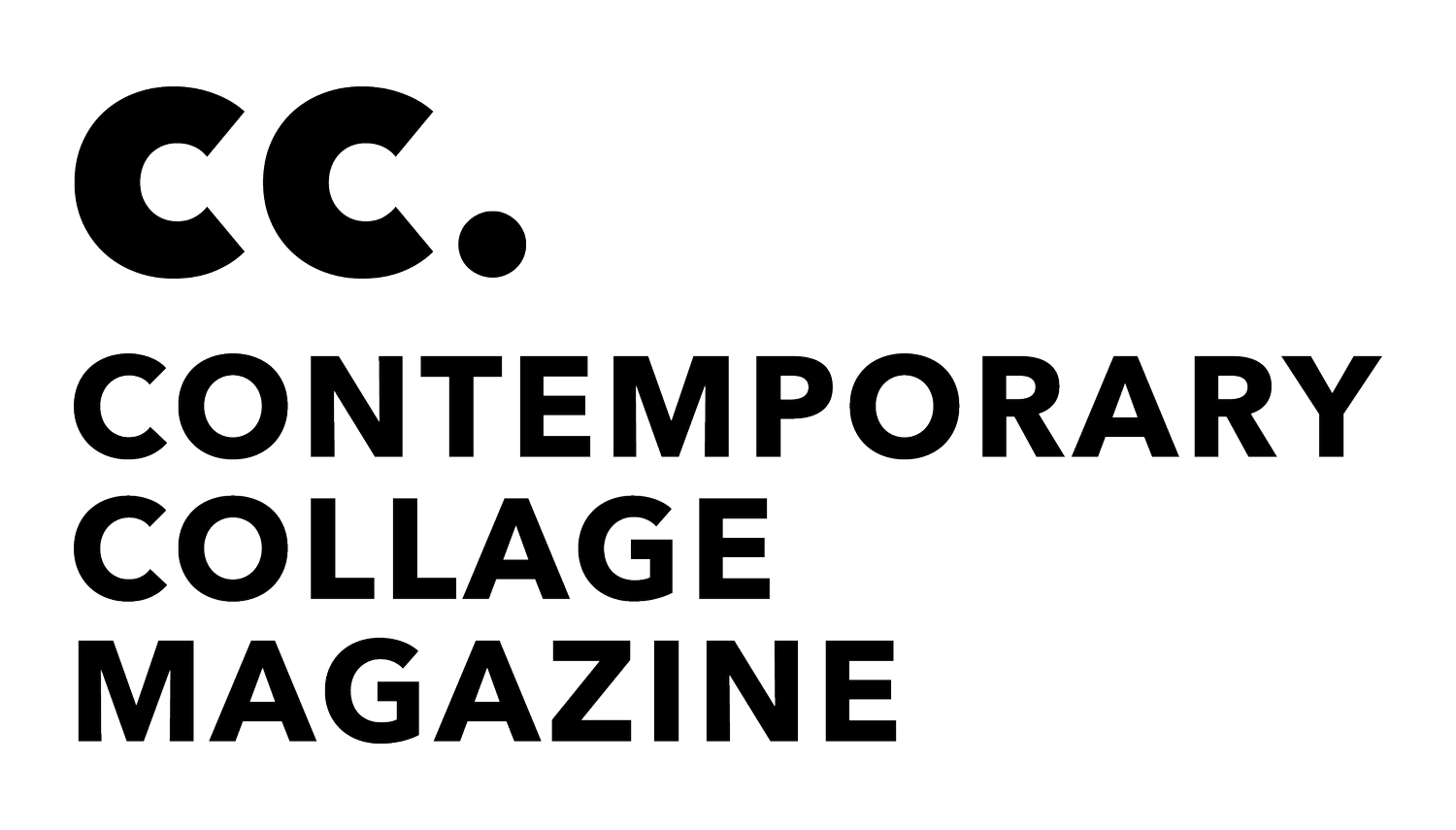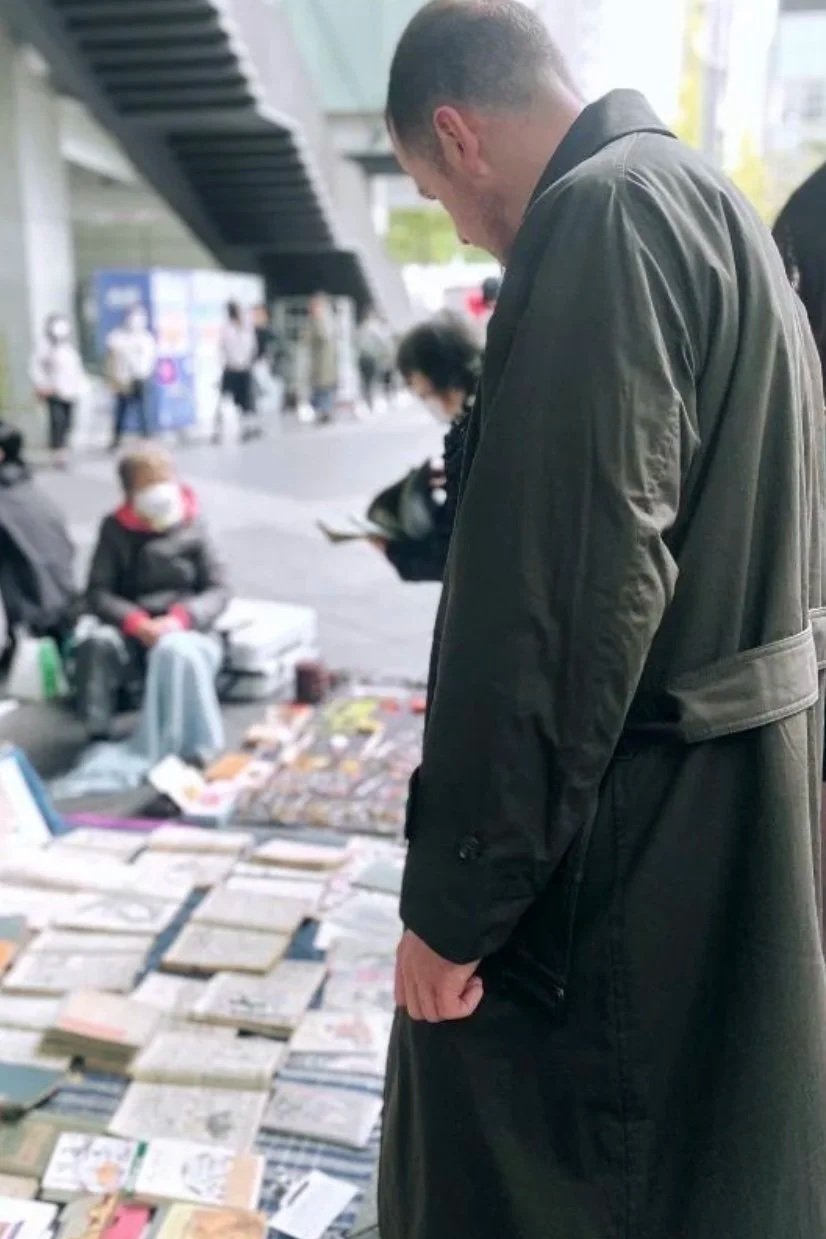10 Questions with : Phil Carney
01. When and how did you first get into collage?
I first started making collages around about 10 years ago, I had been interested in the medium before that but hadn't started making my own until then. I found it to be incredibly therapeutic, from sourcing imagines to working with my hands, the time alone, being present and seeing the beauty in imperfection with what was in front of me I found very personally rewarding.
02. How would you describe your approach to collage and your specific style?
My approach is to first look for papers that have a texture that speaks to me in some way. Could be a crease or line, could be its muted tone or possibly completely broken down and I may only use a small section of it.
My papers are arranged into columns, vertical monoliths. I feel I need this formation, or at least work better with in it. organised like a structure, papers working together. I find a lot of influence from architecture and also from the Japanese concept of MA. I always want to show a lot of negative space in my work. It’s the pause between things I’m interested in, a hidden voice. The distance between lines and imperfections, muted and subtle.
I would say my work is quite texture based, minimal. Although I do sometimes use photography in my work also, grainy, found images mostly, but also Polaroids that have been lifted. More often than not figurative depictions of a look inwards, where ever that place leads.



03. What would be your artistic statement in terms of what you’re seeking to achieve in your work?
Using collage I want to show the impermanence in things, and in particular a look at memory. Using layers of paper creating a structure that hides fragments of something that can no longer be fully visualised, a mediative reflection almost. An attempt to recall what lies in part hidden to the viewer.
As a material I am also interested in paper itself. As the papers age and degrade with time and the effects of the environment they are in, the look of the works will also change and be different from the time in which I made them. This interests me as they will ultimately change from how I first remembered them.
04. What do you want the viewer to get from your work?
Ultimately I would rather leave meaning to the individual to find. In some works I would take away a feeling of stillness, silence almost.
I think all my works are quite muted and this is done purposely.
I do not have an intended meaning to convey for the viewer whilst I’m making them.
05. Who or what are your biggest influences and why?
I take a lot of influence from things outside of collage from ambient music to the films of Tarkovsky. The table paintings of Lawrence Carroll are a big influence, I love the scale of them, the textures of the panels. Traditional washi paper and boro crafts from Japan along with Wabi Sabi philosophy is something I really love and I think a lot of collage does embody. Also I would say architecture is a big influence, the beauty aesthetics of exposed concrete and wood.
06. What ambitions do you have for your art - are there directions you’d like to move in?
In my works I would like to in future move to a bigger scale, all my works are very small. I have found doing larger scale difficult as I work from home not in a studio and also finding suitable materials for a larger scale can be tricky. With that I would also like to move into fabrics, same styles as I have been making but larger. Still working with paper I ultimately want to get to a stage where the works are so muted and understated that centre of the piece is just the paper itself, letting the viewer slow down and appreciate every line or crease, every discolouration as I believe that’s where the quiet beauty lies in the paper itself.
07. What do you use as your materials and where do you source them from?
My materials are sourced from markets and second hand shops mostly. I use a lot of really bad conditioned sheet music when looking in UK for papers. I also have picked up papers on travels to Japan again from markets and in poor condition.
I may go months between picking up materials sometimes but then find magazines and loose papers and stock up.
I travel to Taiwan each year to see my wife’s family so I always end up bring back paper from there also.
08. Can you choose one of your pieces and give us an insight into the story behind it?
This collage is untitled, but this is the one I would use as an example of my work. It’s fairly small but actually larger than most my works. This is an example of how I would try to convey a sense of mediative reflection, a look inwards. Also I’m happy with the use of materials and negative space in this one. I tried to let the tones and lines of the paper speak for themselves and be much larger than the photography, offering the idea of scale between the person and everything that surrounds. I was happy with the composition also as I feel personally it’s quite balanced.
09. Finish this sentence : Collage is...
An endless and tangible way for the past and present to communicate, and give new thought and feeling to everyday materials. The act itself is a therapeutic exercise.
10. What’s the one question we should have asked you, but didn’t?
What are the biggest challenges you face when you work?
What I find most difficult and challenging for me is knowing when to stop adding layers so I can allow the beauty and simplicity of the paper speak for itself. For me the goal is to show the paper for what it is and I have to know when to refrain and say to myself stop.
You can see more of Phil’s work on his Instagram account : @phil.carney.87
Enjoying the CC. Blog? Support us for as little as £1 per month








